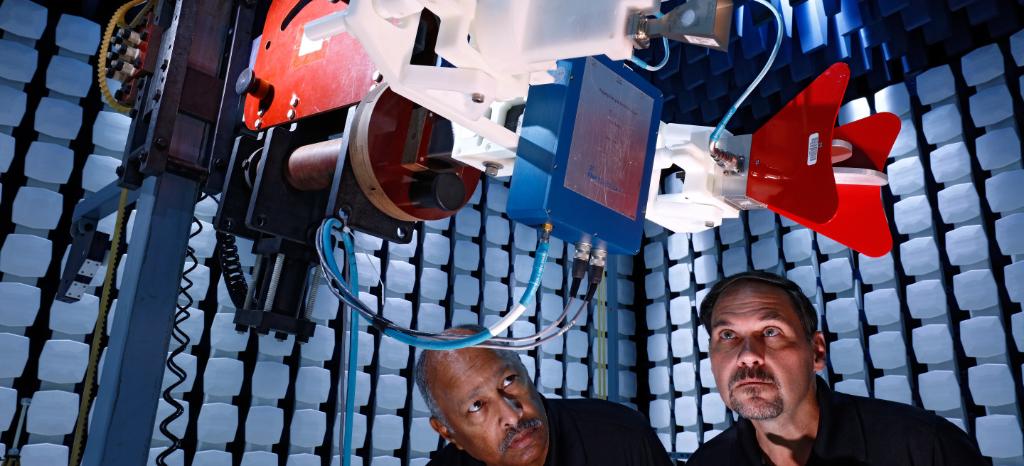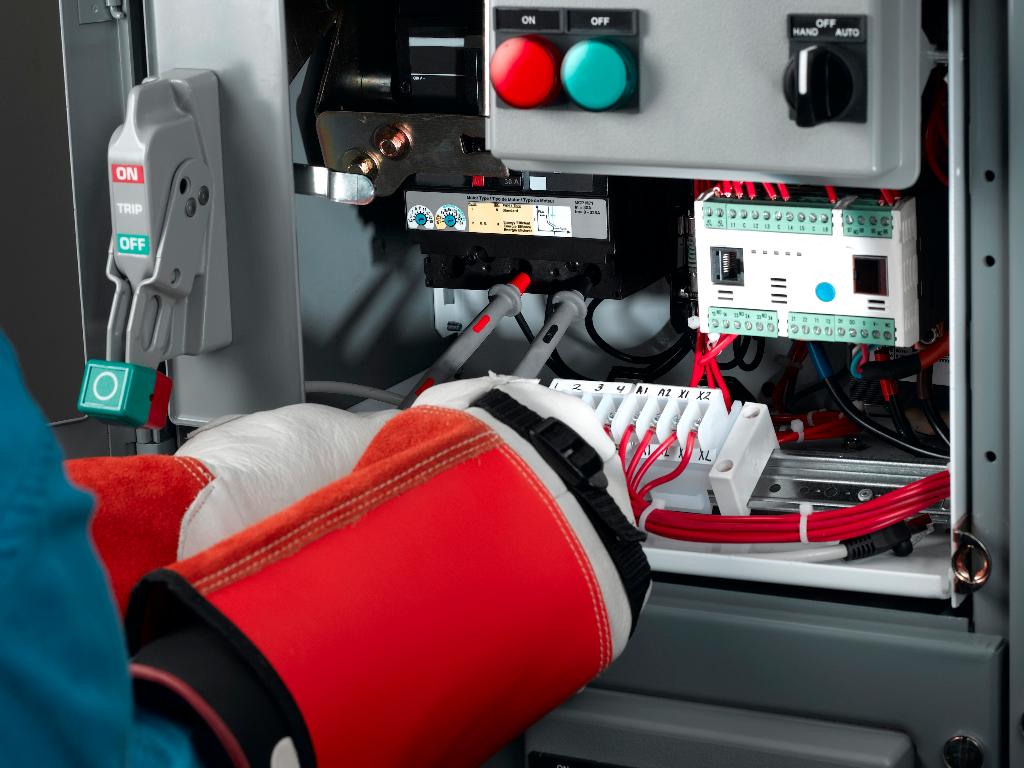Electromagnetic Compatibility (EMC) Testing and Certification

Safety and compliance are twin pillars of EMC certification
/tuv-rheinland-certificate-sample-en.png_core_1_x.png)
Manufacturers of electric and electronic devices in a wide range of industries, from automotive and railway to household and leisure goods to medical and laboratory equipment want to ensure that their products function safely and effectively. Electromagnetic interference and susceptibility that is merely annoying in one context can be life-threatening in another. To prevent this, electric and electronic devices have to adhere to electromagnetic compatibility (EMC) guidelines and must bear the CE marking. Anybody wanting to bring such products onto the European market has to comply with the EMC directive 2014/30/EU.
Our EMC testing regime takes these standards into account, issuing certification for compliance with international market regulations. Testing is carried out by experts in our state-of-the-art laboratories or, in many cases, conveniently on-site. We are thorough, awarding a test mark only after both an initial inspection and repeated checks of production sites.
We have earned the respect and trust of industry leaders and international authorities. As a “Notified Body” within the framework of the EMC directive in Europe and listed by the US Federal Communications Commission, our test mark reflects a commitment to excellence recognized globally.
Are you interested in our EMC testing services? Contact us now to request a quote!
EMC testing for market access and a competitive edge
/tuv-rheinland-eloctromagnetic-compatibility-emc-visual-en_core_1_x.png)
Wherever you market your electric or electronic products, from Europe to Australia, Japan to North America, you are required to meet EMC regulations. Undergoing testing and obtaining certification by a respected third party service provider not only ensures market access, but sends a signal to consumers within those markets. You gain a competitive edge with our test mark, which signals quality and gives customers a reliable point of reference when making decisions in an increasingly competitive environment.
Electromagnetic compatibility testing, certification and monitoring
We provide thorough, impartial testing for the key stages of your product development:
- Testing in the development phase to spot potential problems early and reign in costs
- Testing at the final prototype stage prior to production, complete with a test report for market regulators and stakeholders
- Random sample testing during mass production as part of a quality assurance program
Our experts will evaluate the electromagnetic compatibility of your product in only three steps:
- Testing of the product according to the 2014/30/EU EMC directive: The equipment must be designed so that the electromagnetic frequencies do not interfere with the function of other products and vice versa.
- Issue of the EMC test report
- EMC certification
In our highly-equipped testing labs focus on the following areas: Alarm systems, automotive/e-mobility, components, electric smog measurements, household and leisure products, industrial products, information technology, laboratory products, lights, medical devices, motor vehicle accessories/parts, railway technology products.
We can also conduct numerous measurements at short notice and on site in our mobile laboratory.
On-site EMC Testing Made Easy: achieve EMC Compliance for Large Industrial Systems
/tuv-rheinland-emc-equipment-2_core_1_x.jpg)
Testing large, complex machines for EMC compliance doesn’t have to mean disassembly, transport, or long downtimes. TÜV Rheinland’s free whitepaper shows how on-site EMC testing can streamline your path to CE marking and global market access. Designed for manufacturers and operators of heavy industrial equipment, this guide offers practical insights and clear benefits.
Download the whitepaper now and simplify your compliance process!
Your electromagnetic compatibility certification in capable hands
Our laboratories and experts around the globe have solidified our reputation as a reliable EMC testing and certification provider. We offer expertise in a wide range of industries and extensive knowledge of applicable regulations in countries and regions around the world. Our test mark is synonymous with quality and allows you to access essential certification program characteristics with a QR code. We strive to make testing simple, fast and transparent for customers and provide easy access to certification information on our certificate database Certipedia.
Contact us to get started on EMC testing for your products.
Testing of electromobility components

Mobility is our passion. This is especially true today, as mobility is being reinvented. That is why we love to put our expertise and experience at the service of innovative companies that are helping to shape electromobility. Discover our services for your components from powertrain to charging technology. Learn more!
Onsite EMC Testing
Why is EMC Testing important?
Common Problems Found During EMC In-Situ Testing
How to prepare for EMC Testing
Download our whitepapers
Updated Terms - EMC Services
Contact

_core_4_3.jpg)



